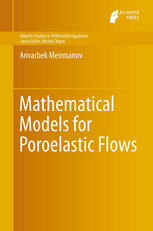

Most ebook files are in PDF format, so you can easily read them using various software such as Foxit Reader or directly on the Google Chrome browser.
Some ebook files are released by publishers in other formats such as .awz, .mobi, .epub, .fb2, etc. You may need to install specific software to read these formats on mobile/PC, such as Calibre.
Please read the tutorial at this link: https://ebookbell.com/faq
We offer FREE conversion to the popular formats you request; however, this may take some time. Therefore, right after payment, please email us, and we will try to provide the service as quickly as possible.
For some exceptional file formats or broken links (if any), please refrain from opening any disputes. Instead, email us first, and we will try to assist within a maximum of 6 hours.
EbookBell Team

0.0
0 reviewsThe book is devoted to rigorous derivation of macroscopic mathematical models as a homogenization of exact mathematical models at the microscopic level. The idea is quite natural: one first must describe the joint motion of the elastic skeleton and the fluid in pores at the microscopic level by means of classical continuum mechanics, and then use homogenization to find appropriate approximation models (homogenized equations). The Navier-Stokes equations still hold at this scale of the pore size in the order of 5 – 15 microns. Thus, as we have mentioned above, the macroscopic mathematical models obtained are still within the limits of physical applicability. These mathematical models describe different physical processes of liquid filtration and acoustics in poroelastic media, such as isothermal or non-isothermal filtration, hydraulic shock, isothermal or non-isothermal acoustics, diffusion-convection, filtration and acoustics in composite media or in porous fractured reservoirs. Our research is based upon the Nguetseng two-scale convergent method.